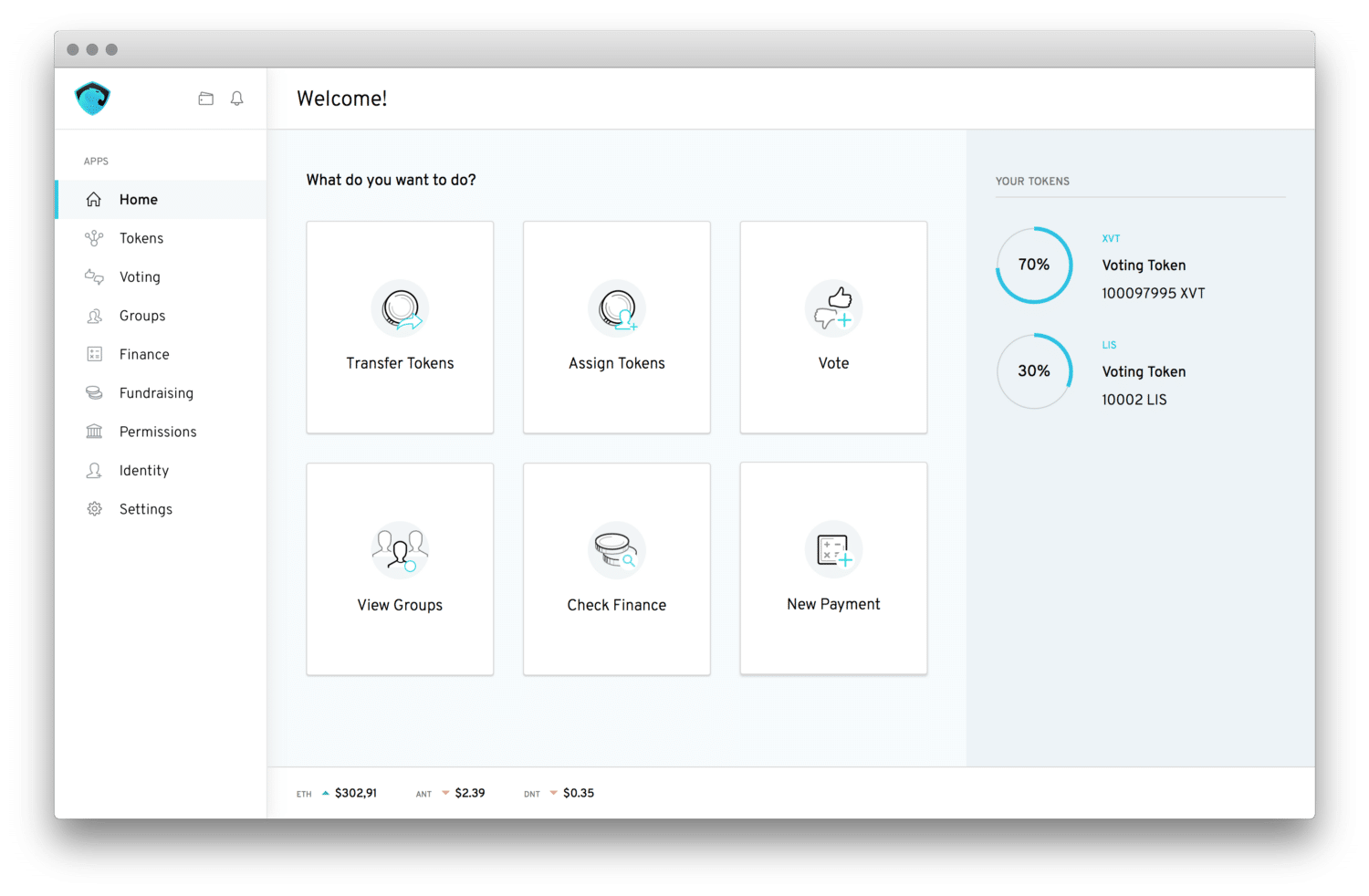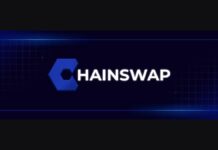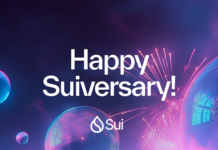What is Aragon?
Aragon is a decentralized app (dApp) on the Ethereum blockchain that allows anyone to create and manage a decentralized organization. The Aragon project is open source and led by the Aragon Foundation. It also includes a token, ANT, that grants voting rights to make decisions about the direction of future development. Eventually, Aragon hopes to be a fully decentralized autonomous organization and dApp that’s a neutral jurisdiction for anyone to create an organization on the blockchain.
Traditional organizations and companies have a significant budget for overhead and administrative functions. In addition, when they transact with other organizations, fees, delays, and middlemen can pile up. This increases friction on the overall economy. Aragon’s vision is removing that friction with decentralized organizations that operate on a shared platform.
Nearly all organizations have a few core administrative functions in common. They need to provide equity to investors, allow shareholders to vote on governance decisions, raise money, pay employees and contractors, and implement access control for accounting and risk purposes. These functionalities come standard (see “Out of the Box Functionality” below) as part of the Aragon dApp for any new organization built on Aragon.
Aragon’s vision is making it simple and easy to set up and operate an organization on the blockchain. Using open source tools and the security of the Ethereum blockchain, the project is aimed at growing corporate adoption of blockchain technology for practical uses. In this article, we’ll see how it works and you’ll be able to decide for yourself if Aragon is a game changer for blockchain adoption.
Blockchain Barriers to Entry
A lot of companies are interested in testing out blockchain solutions for stakeholders, payments, and governance. However, there are several hurdles that make it difficult for companies to take the first step.
The biggest of these hurdles is a lack of expertise. Most companies don’t have blockchain experts on staff. Consequently, they don’t know where to start with smart contract development, dApps, and decentralized organization.

There are also bigger problems that are inherent to blockchain that make organizations nervous. The idea of an immutable ledger is powerful, but it’s also frightening when mistakes can’t be quickly corrected. In the case of smart contract development, there is always a probability of bugs introduced into the code. As such, software needs to be easily upgradable, and there should be a bug bounty mechanism in place to incentivize finding and fixing bugs. Aragon is working on these solutions.
In addition, Aragon is addressing subjectivity in smart contract breaches. With every smart contract, you can encode many of the possible breaches of contract. However, there are also more subjective cases, especially in complex relationships. Aragon establishes an arbitration system for conflicts that aren’t explicitly addressed in the smart contract code.
Out of the Box Functionality
Out of the box, Aragon offers several core features. It has a module for identity management and closely related modules for ownership and access control. Other modules include shareholder voting, fundraising through token generation, HR onboarding and payroll, and accounts payable/receivable. Taken together, the core functionality of Aragon covers the critical aspects of accounting, governance, and identity that make modern companies work.

As you can see, these modules make up most of the administrative functions that a modern company or organization requires. It’s important to emphasize that these modules can individually be turned on and off, providing instant customization for the company’s needs. In addition, all of the code behind Aragon is open source. A company’s development team could edit them as needed to fulfill the company’s requirements.
Modular Custom Features
The modular design of Aragon doesn’t stop with the core modules that come standard. Just as companies can edit existing modules, they’re free to develop completely new models as well. They can also develop atop the data and structures of existing models for extended functionality.

The Aragon Foundation envisions the Aragon Core software could also find uses outside of operating traditional businesses. It’s possible entirely different use cases could emerge:
- Election voting and national polls – Smart contracts could facilitate a prediction model that checks if elected officials stick to their campaign promises and reward their supporters when they do
- Contractor payment – Onboard individuals or even other companies as subcontractors and pay them on an independent basis
- Enhanced analytics and accounting – Add data visualization and layers of analysis on top of the accounting, identity, and voting information that your organization generates
The modular nature of Aragon, combined with its open source ethos, means we could see a whole ecosystem of free to use modules that extend capacity for organizations on Aragon.
Digital Jurisdiction
Aragon explicitly has the goal of creating a digital jurisdiction. Just like countries have jurisdiction over their citizens when it comes to courts of law, Aragon wants to create the first digital court of law. This court wouldn’t operate based on country boundaries. Instead, it would help enforce digital contracts between organizations on the Aragon platform.
The Aragon Foundation
In the early days of development, the project is relying on the nonprofit Aragon Foundation to provide direction and support as the project gets off the ground. The idea, however, is to eventually dissolve, scale back, or change the nature of the Foundation as community support grows. In the future, Aragon will be entirely decentralized and community led. Holders of the ANT token will have voting rights on all issues concerning Aragon.
ANT Token
As mentioned previously, the ANT token represents a share of governance on Aragon. It grants voting rights on development proposals. The amount of ANT you own determines the strength of your voting power.
The ANT token launched with an ICO in May 2017. At the time, it was among the most successful ICOs ever. It raised $24 million in fifteen minutes.
The price of ANT hasn’t seen the massive growth that we’ve seen in other cryptocurrencies. Since its launch, ANT has flown under the radar. It’s currently among the top 150 cryptos by market cap.
How to Buy Aragon Token (ANT)
ANT is available on many major cryptocurrency exchanges. However, there is no direct fiat gateway to buy ANT. If you’d like to purchase ANT, you’ll need to first but BTC or ETH, as those are the most popular trading pairs for ANT.
You can find ANT on Bittrex, Liqui, HitBTC, EtherDelta, and IDEX, among others.
How to Store Aragon Token (ANT)
Since Aragon is a dApp built on the Ethereum blockchain, the ANT token is an ERC-20 compatible token.
As such, you can store ANT using any Ethereum-compatible wallet. MyEtherWallet paper wallets are a popular option for easy and secure storage. For the highest level of security, consider a hardware wallet like Trezor or the Ledger Nano S.
If your wallet has difficulty recognizing the ANT tokens once you’ve transferred them, check out EtherScan to get the contract address and decimals to point your wallet in the right direction.
Team
Aragon is an open source, non-profit project. It has many contributors. It also doesn’t technically have a CEO or CTO. Instead, it has a project lead. But don’t get it twisted, the lead is essentially the CEO.
Luis Cuende is leading the project. In 2011, he received a “Best Underage European Programmer” award, and he’s a recipient of Forbes’ 30 under 30 recognition. He’s a young guy, but with leadership and technical chops. He has advised the Vice President of the European Commission and is an MIT Innovators Under 35 awardee. He has founded several startups and created the first Linux distribution with face login.
The ultimate goal of the project, however, is for Aragon to no longer need a team. The developers hope community involvement and support will drive future initiatives and the Foundation will only play a minor role in coordinating contributions.
Roadmap
Aragon is currently in testing, pre-release. They’re planning to move to version 0.5 in February 2018. Beyond that, the project doesn’t have an official public release date yet or an established timeline for new future releases.
Conclusion
Making it easy to create and manage organizations on the blockchain is an important step for blockchain usability. If Aragon succeeds in its mission to get many organizations on its platform, the network effects for transactions and efficiency between organizations could be enormous. However, with the project still pre-release, it’s still not clear how well Aragon will do implementing the platform and getting buy-in from existing companies.
The post What is Aragon (ANT)? | Beginner’s Guide appeared first on CoinCentral.

TheBitcoinNews.com – Bitcoin News source since June 2011 –
Virtual currency is not legal tender, is not backed by the government, and accounts and value balances are not subject to consumer protections. TheBitcoinNews.com holds several Cryptocurrencies, and this information does NOT constitute investment advice or an offer to invest.
Everything on this website can be seen as Advertisment and most comes from Press Releases, TheBitcoinNews.com is is not responsible for any of the content of or from external sites and feeds. Sponsored posts are always flagged as this, guest posts, guest articles and PRs are most time but NOT always flagged as this. Expert opinions and Price predictions are not supported by us and comes up from 3th part websites.
Advertise with us : Advertise
Our Social Networks: Facebook Instagram Pinterest Reddit Telegram Twitter Youtube











